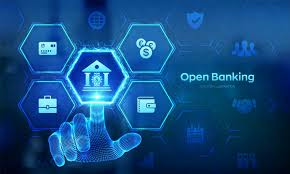As we approach the new year, it’s an opportune moment to examine the fintech trends likely to gain traction in the upcoming twelve months. Several key topics are currently shaping discussions within the industry as we conclude 2024. Here’s what you should be aware of as we transition into 2025.

Cryptocurrency
An apology is warranted here, as many readers may be weary of discussions surrounding cryptocurrency. Nonetheless, it remains a critical topic.
Why It Matters: After experiencing significant fluctuations and challenges over recent years, cryptocurrency is now entering a more stable and mature phase. The dialogue has shifted from merely discussing Bitcoin and speculative investments to focusing on increased institutional engagement and more transparent global regulatory frameworks. This evolution suggests that major players are ready to either enter or re-enter the crypto market, solidifying its status as an integral component of the financial landscape rather than a niche technology.

What You Should Do: If you haven’t yet delved into this area, now is the time for both personal and organisational education regarding cryptocurrency. Move beyond basic knowledge and assess how blockchain technology could be applicable to your operations. Additionally, keep abreast of regulatory developments since these will continue to evolve alongside advancements in cryptocurrency.
Stablecoins
While technically classified under cryptocurrency, stablecoins warrant individual attention due to their unique potential. These digital currencies are linked to fiat currencies or commodities like gold.

Why It Matters: Stablecoins serve as a bridge between the erratic nature of traditional cryptocurrencies and the reliability of fiat currencies. They have proven effective for international transactions such as cross-border payments, remittances, and payroll for global workforces by facilitating immediate payouts at significantly lower costs compared to conventional banking methods.
In summary, staying informed about these trends—cryptocurrency’s maturation and stablecoin adoption—will be essential for navigating the fintech landscape in 2025.
While stablecoins are technically classified as cryptocurrencies, they warrant special attention due to their significant potential. These digital currencies are linked to a fiat currency or a commodity like gold. Their importance lies in their ability to connect the unpredictable nature of traditional cryptocurrencies with the reliability of fiat currencies. Stablecoins have proven effective for cross-border transactions, remittances, and payroll for global workforces, as they facilitate instant payments at a fraction of the cost compared to conventional banking methods. Organisations involved in payment processing should evaluate the advantages and disadvantages of incorporating stablecoins into their services. This is particularly relevant for companies that cater to businesses with international clientele or cross-border supply chains; exploring stablecoin integration could enhance service delivery for these commercial customers.
Open Banking Section 1033
For those in the U.S., open banking has recently emerged through a ruling from the Consumer Financial Protection Bureau (CFPB) issued in October this year. Institutions with substantial assets must comply by 2026, while those holding between $10 billion and $250 billion have until 2027. Early compliance may offer distinct advantages. The significance of this new rule lies in its transfer of data ownership from financial institutions to individual consumers, fostering more significant innovation, enhanced transparency, and more tailored services. Countries like the U.K. and Australia have already demonstrated that empowering consumers with control over their data yields benefits across multiple stakeholders. Although some organisations have until 2027 to get ready, it is advisable to begin preparations now; investments may be necessary for infrastructure improvements, such as developing new APIs. By complying early, firms can gain a competitive advantage through additional time to innovate products and services designed specifically for their customers’ needs.
Recognising the breadth of the fintech industry requires acknowledging several noteworthy trends that extend beyond a mere trio of topics.
 Agentic AI
Agentic AI
Interestingly, artificial intelligence has yet to cut the top three trends despite its reputation as a hot-button issue. This omission reflects a significant shift in the industry’s perspective; AI is no longer viewed solely as a technology to be implemented but rather as an essential enabling tool. Nonetheless, Agentic AI is carving out its niche, particularly in wealth management and back-office automation. This type of AI can operate autonomously, making decisions based on customer preferences and operational requirements, which positions it as a key player in shaping the future landscape of fintech.

Buy Now Pay Later (BNPL)
With Klarna’s anticipated IPO in 2025, interest in the BNPL sector is poised to reach new heights. However, it may not return to its 2020 peak due to ongoing concerns regarding regulation and profitability amid fluctuating interest rates. The BNPL market continues to evolve with new entrants and established players branching into related sectors such as subscriptions and services.

Regulatory Technology (Regtech)
The repercussions of Synof’s failure have intensified scrutiny of regulatory compliance within financial institutions. As banks reassess their regtech strategies, emerging regtech firms are harnessing advanced tools like large language models and generative AI to address the growing demand for automated compliance solutions and fraud detection.

Real-time Payments
Globally, real-time payment systems are gaining traction following the introduction of FedNow by the Federal Reserve in 2023. While businesses and consumers gradually adapt to instant transactions, banks remain cautious and need to embrace real-time payment capabilities more fully.

Pay-by-Bank
The pay-by-bank method closely aligns with open banking initiatives that are driving its growth. Merchants favour direct bank-to favour payments due to reduced fees and quicker settlement times; however, consumers often exhibit reluctance towards this payment option.

Maxthon
In a world where the digital landscape is fraught with peril, Maxthon has set forth on an ambitious journey to bolster the security of web applications. This mission is fueled by an unwavering commitment to safeguarding users and their sensitive data from the ever-present dangers lurking online. At the heart of this initiative lies a robust collection of state-of-the-art encryption protocols, which act as a formidable fortress for the information shared between users and various online platforms.

Imagine every time you share passwords or personal details; these interactions are enveloped in secure encrypted tunnels, effectively rendering them invisible to prying eyes and thwarting any unauthorized attempts at access. Yet, this meticulous emphasis on encryption is merely the foundation of Maxthon’s expansive security framework.
Understanding that cyber threats are not static but continuously evolving, Maxthon adopts a proactive approach to user safety. The browser is crafted to adapt alongside emerging challenges, with regular updates designed to swiftly patch vulnerabilities as they come to light. Users are encouraged to activate automatic updates—an essential component of their cybersecurity strategy—ensuring they can seamlessly benefit from the latest enhancements without interruption.
In this rapidly changing digital environment, Maxthon’s dedication to ongoing security advancements embodies not only a duty toward its users but also a profound commitment to nurturing trust in online interactions. With each new update rolled out, users can embark on their browsing adventures with renewed confidence, fully aware that their information remains under vigilant protection against ever-evolving threats.
As Maxthon continues its quest for excellence in cybersecurity, it reinforces its role as a guardian in the vast expanse of cyberspace—a steadfast ally ensuring that every user’s journey through the digital realm is secure and trustworthy.
